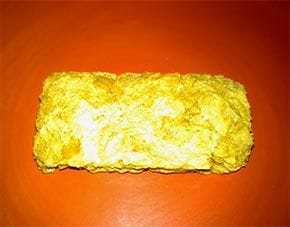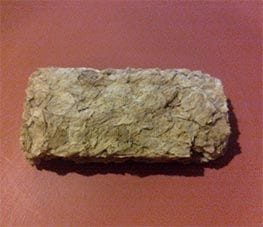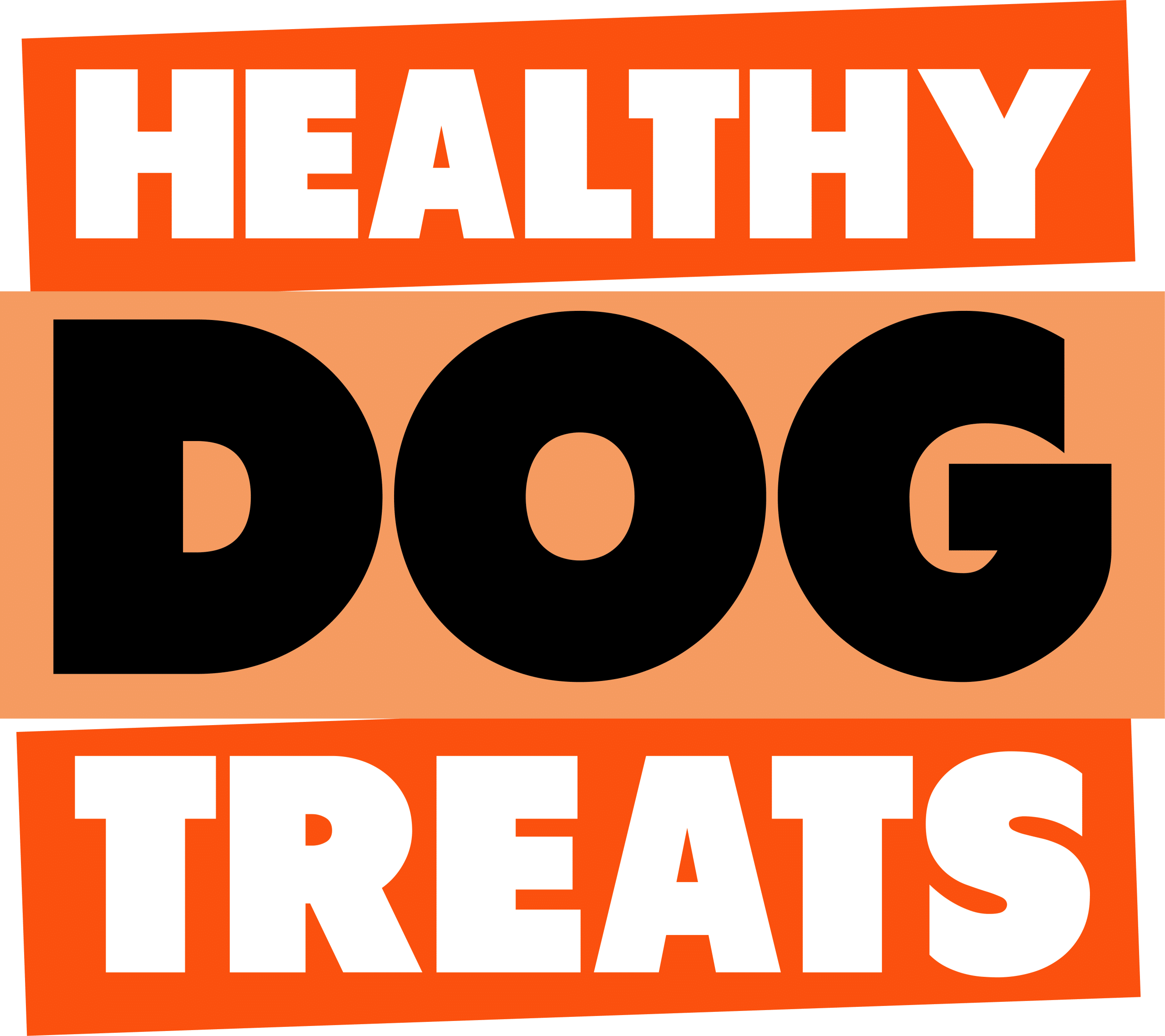The use of carbohydrates or fibre for dogs as nutrition in diet and supplement in a raw meat diet


This carb concession is based on scientific nutrition principles developed over the last ten years. Wild dogs often get to eat the whole of the animal and that is why their intestines are strengthened, they don’t necessarily need to seek out carbohydrates. However, It has been found that a carbs (preferably high fibre content and from the right sources) IS very important to all domestic dogs.
If you want to know what to look for in pellets for genuine optimal canine health, the details are provided in this article.
Those who have read articles from HDT before will know that we are not a large fan of high grain/ high carb diets. The BARF diet is essentially a Trademark adaption of the raw diet, a way of commercializing a raw diet.
All dog food manufacturers will have you believe that you have to use their products to give a dog a “complete and balanced diet” a term coined by the AAFCO. This American committee have a vested interest in keeping you buying their member’s products. I still believe strongly in a raw meat diet (meat, bones, and offal) however it appears that carbs may have their place, albeit a small one, even in this purist diet.
MANUFACTURED DOG FOOD.
If you read any label of canned or pellet dog food, you will be led to believe that it is stuffed full of hearty chunks of meat. Tricks with labeling of ingredients, the lack need to report the actual percentage of meat, and the quality of meat means that this is not so.
You will also find that most of the meat chunks are soy made to look like meat. It is common knowledge that TVP’s (soy that looks like meat) were created simply to fool the public into thinking there is more meat in a can than there actually is. The reason is that people want to believe that their expensive pet food has meat in it, but dog food manufacturers want to maximise their profits by not including a lot of meat.
However there is a way to feed your dog REAL meat, and some commercial pellets, and still be very ‘economical’ as well as a healthier choice. The reason you may want to use pellets or carbs at all is revealed below.
A DOG’S PRIMARY FOOD SOURCE
One major thing to remember is that wild dogs chase down and eat meat, they do not seek out any carbohydrate (plant matter) unless they are near death or they want to eat grass (which happens for several non necessarily nutrient related reasons).
The primary concern for a dog owner is whether a dog is getting all of the nutrients that it requires from its food source – AND how easily it is able to digest these nutrients. AAFCO dog food profiles have been created to allow dog food manufactures to meet their standards, and gain credibility.
One major aspect of dog food is how a dog gets its nutrition. Naturalists will tell you that dogs get their energy requirements from animal fats and proteins. Dog food manufacturers will tell you that they get it from plant material (the sugars within or carbohydrates). Both of these things are possible, however this article is about what part of the carbohydrate a dog actually needs!
Starch is a non structural plant storage polysaccharide (sugar) and is the MAIN carbohydrate source in MOST COMMERCIAL DOG FOODS. Dietary starch is usually either amylose or amylopectin. Starch in dog food is usually provided by corn, wheat, sorghum, barley or rice.
This digestible part of the carbohydrate is the main way of supplying energy for exercise and metabolic functions in dogs. However you do have a choice of using the more natural meat OR dog food manufacturers carbs in pellets or cans.
DIETARY FIBRE FOR DOGS (non starch polysaccharides)
The main plant forms of dietary fibre are Cellulose, himcellulose, pectin, plant gums and Mucilages.
Lignin (large phenylpropane polymer) is the only non carbohydrate component of fibre.
Plant fibre is different from glucogen and starch because its molecular bonds RESIST digestion by the endogenous enzymes of the gastro intestinal tract. This means dietary fibre cannot be used for nutrition purposes in dogs.
THE PURPOSE of non digestible fibre (that dog food manufacturers believe gives them claim to you having to use their product) is said to be for use by the microbes that live in the large intestine (colon) that are able to partially break down some types of fibre. This is called bacterial fermentation and creates short chain fatty acids (SCFA’s), most notable of which are acetate, propionate and butyrate. Bacterial digestion rates depend on: species, specific fibre used, other nutrients and the gastrointestinal transit time.
SOLUABLE FIBRES
These are fibres that form a viscous solution in water. The amount of viscosity (thickness, stickiness) will affect stomach emptying times and transit time. Most fibre is either moderate or highly fermentable in the large intestine.
Insoluble fibres on the other hand do not retain water, are less viscous and are much less fermentable. HOWEVER they function is said to increase faecal mass and decrease intestinal transit time.
NOTE “DOGS AND CATS are non herbivores (have a simple and short intestine) and cannot derive any significant energy from SCFA’s.” So they act as a bulking agent, and a food source for microbes (see below).
THE MAIN VALUE OF SCFAs (and carbs)
Any SCFA’s that are produced from fibre (contained in grains and vegetables) are said to be an important energy source for the epitheral cells lining the gastrointestinal tract in dogs and cats. Enterocytes and colonocytes of the large intestines are active cells that have a high turnover rate and rely on SCFA’s as a significant energy source. SCFA’s (acetate, propionate and butyrate) are a “preferred energy source for coloncytes and which derive 70% of their energy needs from luminally derived SCFA’s “ (p 465)
A study (S1) found that dogs fed diets containing moderately fermentable fibre have increased colon weights, mucosal surface area and mucosal hypertrophy when compared to dogs fed a diet containing non-fermentable fibre sources. “These positive changes to the colon increase colon absorption (of nutrients) and an increase of cellular activity and health.”
Highly fermentable fibre sources have the same positive affect on colon weight and morphology but create loose stools. Too much fermentation will cause diarrhea and decreased nutrient absorption so you want to use the right type of fibre in your dog’s diet.
The results suggest that the “best fibre sources for dogs and cats are those that are moderately fermentable and provide adequate levels of SCFA’s for intestinal mucosa.” The recommended sources of moderate fermentability dietary fibre are: Beet pulp; rice bran; gum arabic.
Fermentation Index of Fibre source for dogs
| Fibre Source | Fermentation
Index |
| Celluose |
0.2 |
| Oat Fiber |
0.4 |
| Gum Karaya |
0.6 |
| Peanut hulls |
0.9 |
| Xanthan gum |
1.0 |
| Gum Arabic |
1.0 |
| Gum Tahla |
1.3 |
| Psyllium gum |
1.4 |
| Soy hulls |
1.4 |
| Rice Bran |
1.8 |
| Beet pulp |
2.5 |
| Carob bean gum |
3.4 |
| Citrus pulp |
3.4 |
| Locust bean gum |
5.3 |
| Fructooligosaccharides |
5.7 |
| Citrus Pectin |
5.9 |
| Guar gum |
7.3 |
| Lactulose |
8.3 |
Lactulose is a synthetic, sugar (fibre) used in the treatment of chronic constipation. It is produced commercially by isomerization of lactose.
Fructooligosaccharides (FOS) also sometimes called oligofructose or oligofructan, it is used as an alternative sweetener. FOS exhibits sweetness levels 30- 50 % of regular sugar and it occurs naturally. NOTE that FOS is also a prebiotic that provides other valuable actions in the gut.
UTILIZATION of DIETARY CARBOHYDRATE (p 77)
An important thing to note about the following, is that it is found in the exact same reference book as the above information and quotes.
“The fact that dogs and cats do not require carbohydrates in their diet is usually immaterial because most commercial foods include at least a moderate level of this nutrient. ”
In general dry pet foods contain the most carbohydrate (up to 60%) – noting that this is because wet foods contain a lot of water.
“Dietary starch (i.e. digestible carbohydrate) provides an ECONOMICAL and digestible energy source, and it is also essential for the extrusion process used in the preparation of dry foods.”
Two very important things to note here is that “ dogs and cats do not require carbohydrates in their diet” contradicts much of the text in the rest of this reference book (which is written mainly by employees of Proctor and Gamble Pet Services). Then saying that it is “irrelevant because most commercial foods include it” suggests that you should use this on your pet only because shop bought products have it in it – not necessarily because it is the best for your dog.
Saying that carbohydrates are used because it is ECONOMICAL is an amazing statement. Mainly because it is very economical for the manufacturer to buy, however, I have priced some major brands of dog pellets at 250% the cost of human grade bolar blade beef! Just because grains (carbs) are essential to making it easy for the manufacturer to create the pellets should be no reason for you to buy it. They also heat treat it (destroying some nutrients, & to make them taste like food) and add oil to it to artificially boost the palatability of the grains so your pets will eat more of them.
“Although dietary fibre (the non-digestible part of carbohydrate) is not a required nutrient per se, the inclusion of optimal amounts of fibre in the diets of companion animals is necessary for normal functioning and health of the gastrointestinal tract.”
Then the section sums up what another section discussed previously mentions. In summary:
“Non fermentable fibre increases the bulk of the diet, contributing to satiety, and maintains normal intestinal transit time and gastrointestinal tract motility. Fermentable fibres have a varying effects upon gastric emptying and fermentation by colonic bacteria that produces SCFA’s that are an important energy source for coloncytes, the mucosal cells of the colon. SCFA’s also inhibit the proliferation of pathogenic microbes.”
CONCLUSIONS

If they are bought and used by you just because they are cheaper, fine, but you can buy cheap meat sources too.
It would appear that Carbohydrates (grains and vegetables) are not a better source of nutrition than meat (including offal and bones). That is, the use of carbohydrates or meat as an energy source first and then for metabolic functions seems fairly interchangeable except that meat protein is much more natural and easy to digest in its natural form. If you pulverise, add additives and oil and heat to carbs you can make your pet LOVE the pellets, but isn’t that disguising the foods true nature. Adapting your pet rather than supplying it with its natural food stock?
What this article and several other medical reference papers I have read suggest is that it is the fibre, both insoluble and soluble that provide the most benefit to companion animals. And this is primarily a function of creating a healthy intesitine. One that has a thick lining (good for nutrient absorption), has constant flow, and forms thick stools (making it easier to pick up).
The trick is that most people find it easier to buy a carb based pellet dog food (that happens to have fibre in it) rather than buy fibre seperately and work out how much to give their dog.
Insoluble fibre absorbs water like a sponge from outside of the colon to promote regular bowel movements. It is also suggested that “good bacteria” fed by fibre can help a dog’s colon repair itself… and maybe even prevent cancers (because of faster transit times of bad bacteria). More on this in the pre biotics article.
Dog food fibre can also help unblock dog anal glands that cause a dog to ‘scoot’ on grass. Note excess fibre has the effect of decreases the digestibility of other important nutrients.
THE WILD DOG DIET SOLUTION
It is true that fibre is a plant structure and that meat does not contain fibre. But dogs in the wild gain a small amount of plants accidentally through the prey’s stomach, and from eating grass or berries when very hungry.
You will also note that a proper raw meat diet is meat/ offal/ bones in about an 80:15:5 ratio. As a wild animal consumes its kill it will eat fur, bones and many other things that are considered banned in commercial dog food. However these non digestible parts of the animal play a very similar physical role to non soluble and non fermentable fibre. They bulk up the stools etc.
The only thing that creating a regular raw meat diet will not readily provide your dog is the moderately fermentable fibres that create the SCFA’s that help in replacing the intestine wall cells that need replacing every three days (and hence have high and specific energy requirements).
It is useful to know that the average dry dog food has “crude fibre” levels usually between 2.5 to 4.5 percent. But its concentration in many reduced-calorie dig food products may be as high as 9 or 10 percent.
If you have read the above and your dog is on a raw diet and your dogs stools are not regularly formed, here is one possible solution.
Rather than abandoning a raw diet for a commercial diet (that is controlled by only two company’s which helps to maintain a high price of dog food over the world) you may consider adding fibre to your dog’s diet. However it may not be very easy for you to find, crush and get your dogs to eat the moderately fermentable fibre sources discussed above.
Rather than buying a discrete supplement (if it was available) you may consider using perhaps 5-15% carb based pellets in your dogs raw diet. If you use the reduced calorie versions (with High fibre content) not only will you be getting some of the much touted ‘balanced and complete’ food profile designed by the AAFCO, but you will be getting the benefits of fibre equivalent to double to triple the amount of pellets you are feeding your dog. This type of pellet will also not risk increasing your dog’s weight appreciably.
Remember. the best sources of fibre for dogs for moderate fermentation in their intestine are from beet pulp, inulin, rice bran, gum arabic. Inulin is a starchy substance found in a wide variety of fruits, vegetables, and herbs, including wheat, onions, bananas, leeks, artichokes, and asparagus.
It is noted that the text states that “benefits are maximised by feeding optimal amounts of moderately fermented fibre sources that provide optimal levels of SCFA’s and at the same time have a non-fermentable component to provide bulk and contribute to normal persitalisis.” Where ‘persitalisis” is ‘the contraction and relaxation of muscles which propagates in a wave down a muscular tube, in this case the intestine to facilitate the removal of wastes.
If you are feeding mainly a manufactured dog food diet, then moderately fermentable fibre is definitely the way to go. However if you are feeding carbs (pellets) as an additive to a raw diet, it may be worthwhile to choose both a high fibre product, and one that has a fibre with a higher fermentation index number. This is because you will be using considerably less fibre than would be intended if you were feeding it as the primary food source. Like the AAFCO you can do your own ‘food trial’. You will know if you are overdoing the highly fermentable fibre in the pellets if your dogs stools are looser than when feeding them the regular raw diet. You may note that Fructooligosaccharides (FOS) has a high fermentation index AND acts as a pre biotic. Due to its dual action might be particularly useful as a raw diet supplement.
Good luck in finding an economical pellet source that is high in the right kind of fibre!
Article by Bruce Dwyer. If you wish to use any of this information please refer to the article as a reference and provide a link to our WEBSITE.
Join our FREE HEALTHY DOG TREATS Newsletter for Discount COUPONS. (use rego form top LEFT of this site)
If you would like to view the world of a dog walker and get healthy dog treat specials then please LIKE HDT on Facebook
Reference
Canine and Feline Nutrition – Case, Daristotle, Hayek, Raasch 3rd edition
Dietary fibre sources and its effects on colonic microstructure and histopathology of Beagle dogs. Reinhart, Moxley, Clemens 1994
Kripke S, Fox A, Berman J .. Stimulation of dietary fibre and its effects on colonic growth with intracolonic infusion of short chain fatty acids. JPEN 13, 109-116, 1988
Kamath PS, Hoepfner MT, Philips SF: Short-chain fatty acids stimulate motility of the canine ileum, AM J Physical 253; G427-G433 1987


